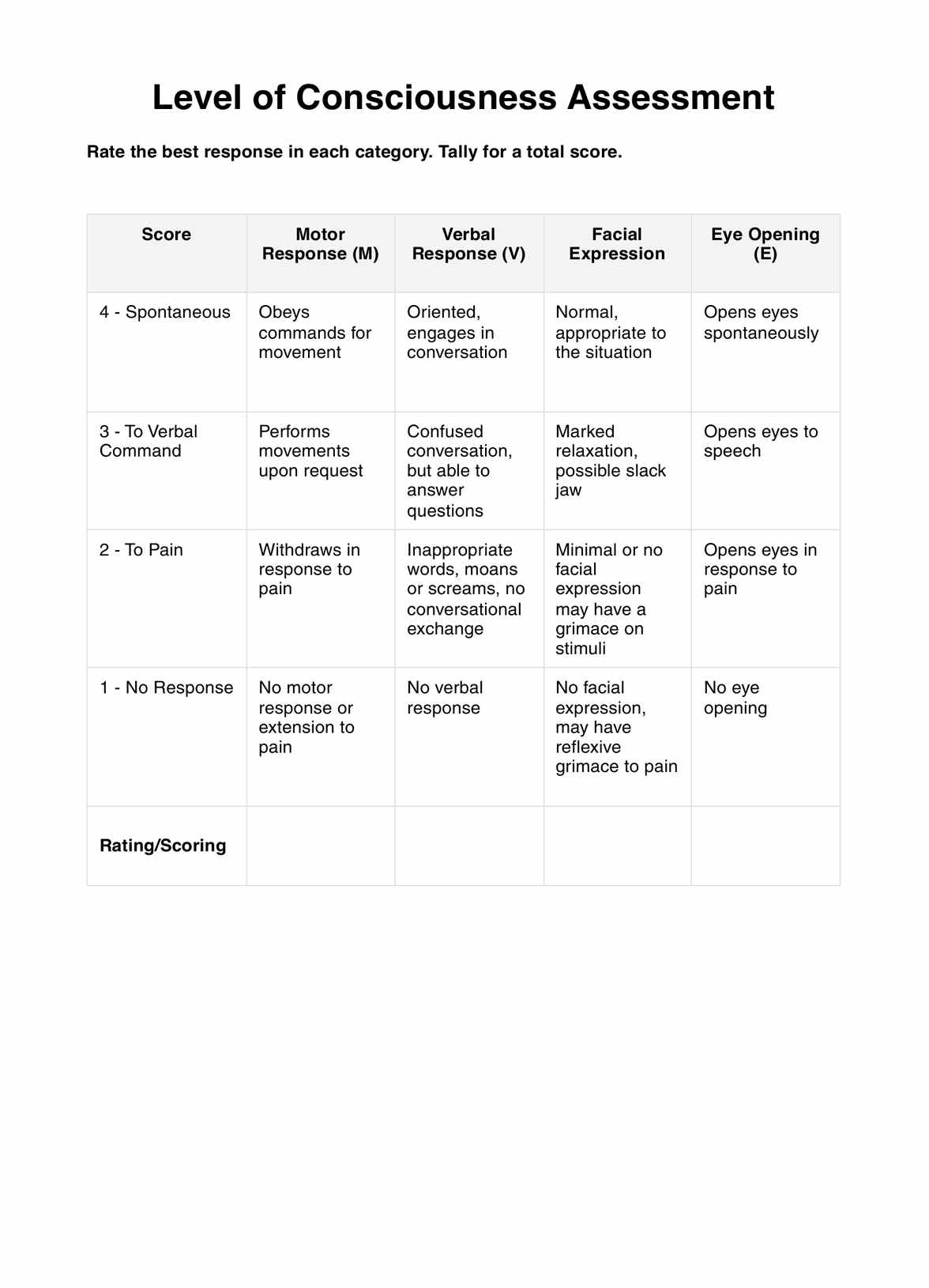The Level of Consciousness Assessment is a systematic evaluation used by medical practitioners to gauge a patient's neurological status. It includes components such as responsiveness and orientation, and it applies the Glasgow Coma Scale (GCS) to quantify the level of consciousness based on eye, verbal, and motor responses.

Level of Consciousness Assessment
Enhance patient care in neurology with this guide for medical practitioners on conducting a Level of Consciousness Assessment.
Level of Consciousness Assessment Template
Commonly asked questions
The assessment is crucial for early detection of neurological issues, allowing for timely intervention and prevention of the progression of conditions. It helps tailor treatments based on the patient's specific level of consciousness, ensuring a personalized approach to care. Additionally, the assessment is valuable for monitoring progress over time, guiding intervention adjustments, and promoting improved neurological functioning.
Interpretation of assessment results involves analyzing findings related to responsiveness, orientation, and GCS scores. Collaborating with other healthcare professionals, including neurologists and therapists, enhances comprehensive insights into the patient's neurological status.
EHR and practice management software
Get started for free
*No credit card required
Free
$0/usd
Unlimited clients
Telehealth
1GB of storage
Client portal text
Automated billing and online payments











